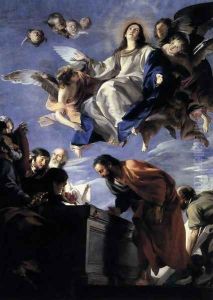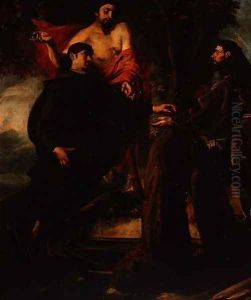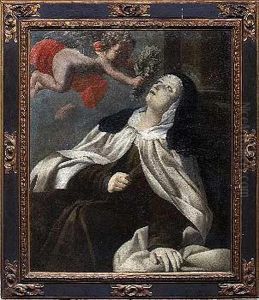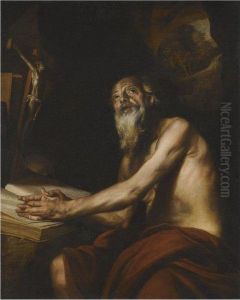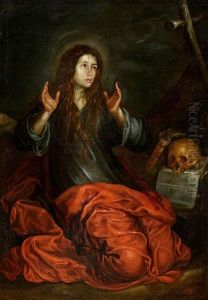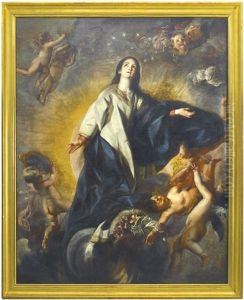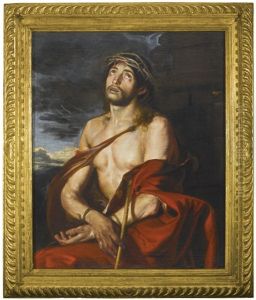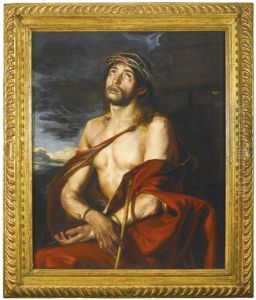Juan Martin Cabezalero Paintings
Juan Martín Cabezalero was a Spanish Baroque painter born in Almadén, Spain, in 1633. His life, though brief, was marked by the creation of works that exemplified the rich, emotive qualities characteristic of Spanish Baroque art. Cabezalero's talent emerged in a period dominated by the likes of Velázquez and Murillo, and while he may not have achieved their level of fame, his contributions to the Spanish art scene of the 17th century were significant.
Cabezalero moved to Madrid early in his career, where he became a disciple of Juan Carreño de Miranda, a leading court painter of the time. Under Miranda's guidance, Cabezalero honed his skills, particularly in religious and portrait painting. His works are noted for their dramatic use of light and shadow, a technique known as chiaroscuro, which adds a profound emotional depth to his subjects. Despite the scarcity of documented works attributed to him, those that survive demonstrate his ability to convey the spiritual fervor and intensity of the Counter-Reformation period in Spain.
Notably, Cabezalero's art was predominantly commissioned by religious institutions, and his altarpieces and frescoes adorned many churches in Madrid. His most admired works include the 'Immaculate Conception' and 'St. John at Patmos,' both of which showcase his mastery in handling religious themes with a deeply emotive and dynamic approach. Sadly, Juan Martín Cabezalero's career was cut short when he died in Madrid in 1673, at the age of 40. Despite his premature death, Cabezalero left behind a legacy that continues to be appreciated for its contribution to the richness of Spanish Baroque painting.
